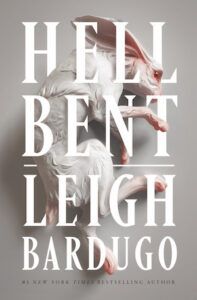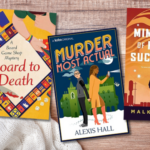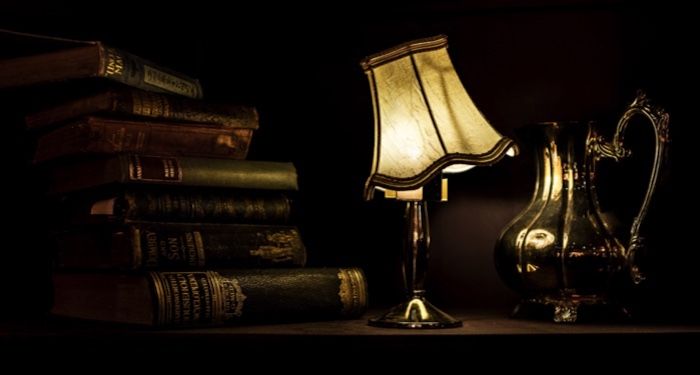
Themes, Tropes, and Types of Dark Academia
What comes to mind when you think of dark academia? Rainy, windy days, tweed, black coffee, and a stack of books to the ceiling? Or murder, lust, and Mark Anthony’s speech at Caesar’s funeral? Yes, and:
Dark academia is a sub-genre of literature, making itself comfortable in mystery, thriller, horror, and general fiction. It’s also an internet-fueled style of dressing, decorating, and behaving. Inside dark academia books, it’s easy to get lost in the spires and flowery prose. What are these books trying to say with their pompous protagonists and 800 pages? Let’s examine some of the themes, tropes, and types of this stylish sub-genre, to find out what the obsession is all about.
Common Tropes and Themes
Dark academia is more than a scholastic setting. Thematically, it’s all obsession: obsession with truth, obsession with perfectionism, obsession with death and beauty. The search for knowledge and uncovering a hidden truth comes at a cost: the protagonist is required to give up something treasured, such as friendship, privilege, or morality. Dark academia is closely related to coming-of age-stories — both feature young adults on a self-discovery journey — but usually, the dark academia protagonist is brought down by their own hubris.
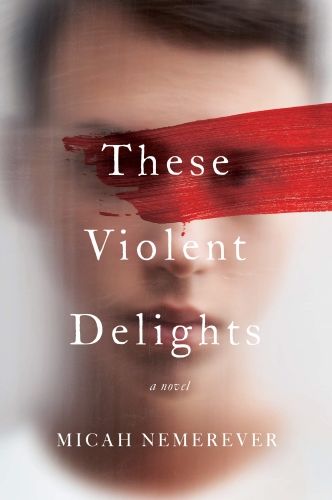
Before they can fall to their scholarly demise, the protagonist must first face other obstacles, seeing themselves as an outsider. The protagonist is prone to monologuing to express their suffering. Every misery is magnified and romanticized. They live on black coffee and cigarettes and Burger King condiments. Sleep is for the weak. The protagonist cannot see past their own existentialist view of life.
Class, race, sex, and religion may appear as one or more of the obstacles that make the protagonist an outsider, but do not always factor in as a central theme of the story. Most dark academia protagonists find a way around their obstacles, but appear indifferent until their spark of academic interest is lit.
These Violent Delights centers Paul, a gay, Jewish working class college student. Paul feels intellectually superior than most of the people in his life and finds a kindred spirit in Julian, a wealthy, volatile classmate. Their friendship, a word I’m using loosely, becomes their central conflict and concern.
Fair weathered friendships and weirdly close friendships that either become brotherly, violent, or sexual are a marker of dark academia novels. The levitating girls in The Lightness, the four in A Little Life, the Dalloway Five in A Lesson in Vengeance — take your pick, they’re all slightly off center. Reflective of the ups and downs of adolescent friendships, these friendship groups can be painful to read about.
The main setting of a dark academia book can a private high school, an elite university, or even a specialty training program. Within the academic setting, there is some kind of secret society or inner social circle. In M.L. Rio’s If We Were Villains, it’s the Shakespeare students. The inner circle can be small, such as Never Let Me Go’s Kathy, Ruth, and Tommy, or only real to those part of the circle, like the Greek class of The Secret History.
Morally gray, unhinged characters make up the inner circle, making room for justification of cruelty and even criminal behavior. A prominent example of this justification is the murder of Bunny Corcoran in The Secret History. While a murder is revealed at the beginning of the book, the identity of the deceased isn’t revealed until the reader is made to surely loathe Bunny.
“Bunny is a gold-digging asshole, therefore he deserves to die.” —Richard Papen, probably.
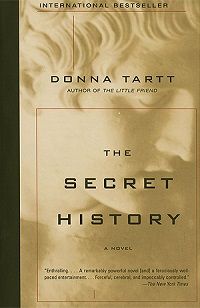
Similarly, Paul and Julian of These Violent Delights slowly fall into malice and violence against the world and each other. The justification is lost somewhere in Paul’s grief and Julian’s bitterness.
The pompous, self-obsessed characters of the inner circle wouldn’t be anywhere without their trusty guide. The mysterious authority figure appears frequently in dark academia novels, as a professor, an older friend, or government official. This is Julian Morrow in The Secret History, Detective Colborne in If We Were Villains, and Viktória Varga in Catherine House. The mysterious authority figure shows their difference from other older figures by their sage, if not quirky, advice. We see this kind of trope in fantasy novels as well, with Merlin in The Sword in the Stone and Gandalf in The Lord of the Rings. Dark Academia is full of tropes and clichés, from the ever-stormy weather to the effortless way the characters ace their final exams despite being out all night doing shenanigans in the woods.
The most concerning trope found in dark academia is the overt Eurocentrism. While more diverse dark academia and dark academia-adjacent books are being published, the dark academia aesthetic and dark academia darlings remain extremely white. Prioritizing the classics of the western cannon and western thinking as the highest level of academic achievement is inherently problematic. Criticisms of dark academia appear within works such as Babel: An Arcane History. Set in a fictitious Victorian Oxford, Babel responds to Eurocentric academic exclusivity and colonialism.
Other Types of Academia
With the expansion of dark academia interest, the sub-genre has branched off into new types. These new types have plenty of space for non-white, non-Western stories, characters, and aesthetics. A quick search on Pinterest, Tumblr, or other image-based sites will garner various aesthetic based “academia” results. The Gothic American Prep aesthetic is most closely associated with classic dark academia, with dark, neutral colors and cups of black coffee as accessories. Green/witchy academia has been popular with the surge of popularity for simplistic, earthy toned clothing and home décor of cottagecore and goblincore popular on social media like TikTok.
Light academia is the flip side of the dark academia coin, offering a more optimistic view of the world. Its characters may have a more pronounced moral compass. Classics like Little Women and Anne of Green Gables, with school-age characters, and brighter, warmer characters can fall into light academia. Like dark academia, light academia is intensely emotive, with an interest in literature and the arts.
Romantic academia is yet a further branch of light academia, focusing on philosophy, music, art, with romantic love being the primary emotion. Romantic academia follows the principles of the Romantic era, glorifying nature and celebrating beauty and discovery. Subject specific academia branches makes room for obsession-themed films like Whiplash and The Black Swan.
While most dark academia branches are more Pinterest search terms than they are book sub-genres, a common type of branch is fantasy academia. The magic school, the sorcerer in training. Books like Magic for Liars, Amari and the Night Brothers, and Spin the Dawn, appeal to kids and adults alike, because we all want our problems to be magically solvable. Just say the ~magic words.~ In fantasy academia, magical knowledge is the object of obsession. The mysterious guide leads the way, and the hero overcomes class divisions to achieve their goal.
Obsessed with dark academia? Get into the aesthetic with your favorite neutral-toned knits, a chipped mug of tea, and a big stack of leather bound world classics. Leave the elitism and Eurocentrism at the door.
Also In This Story Stream
- Dark Academia vs. Chaotic Academia: What’s the Difference?
- Why Demonic Prep Boys Keep Appearing in the Dark Academia Canon
- The Best Dark Academia in Science Fiction and Fantasy
- Dark Academia and Horror: A Bloody, Perfect Marriage
- Class Action: 8 of the Best Dark Academia YA Fantasy Books
- 8 Dark Academia Manga and Manhwa
- Why Dark Academia is Perennially Popular
- How to Survive a Dark Academia Novel
- 8 Brilliant Dark Academia Books by Authors of Color



